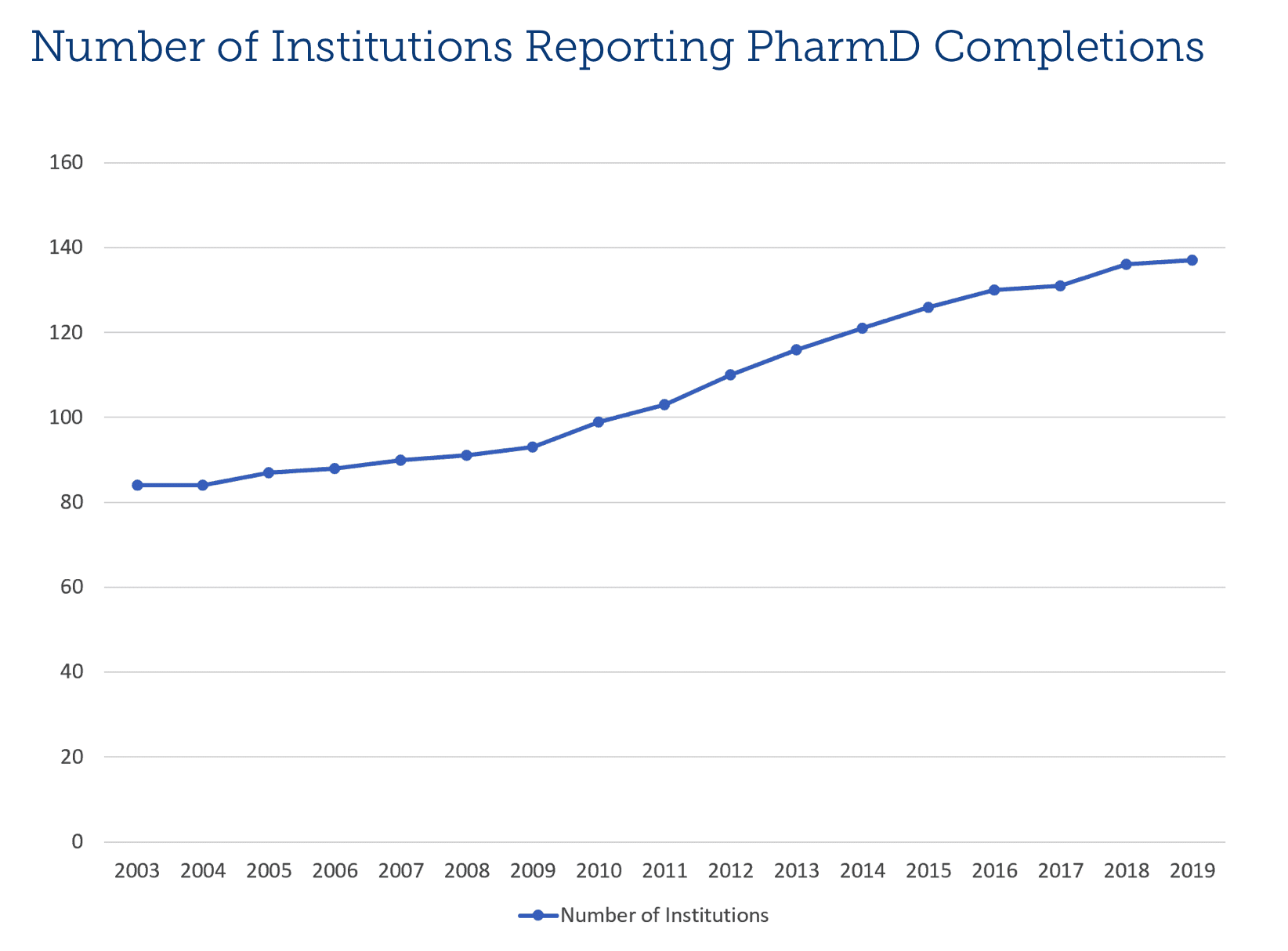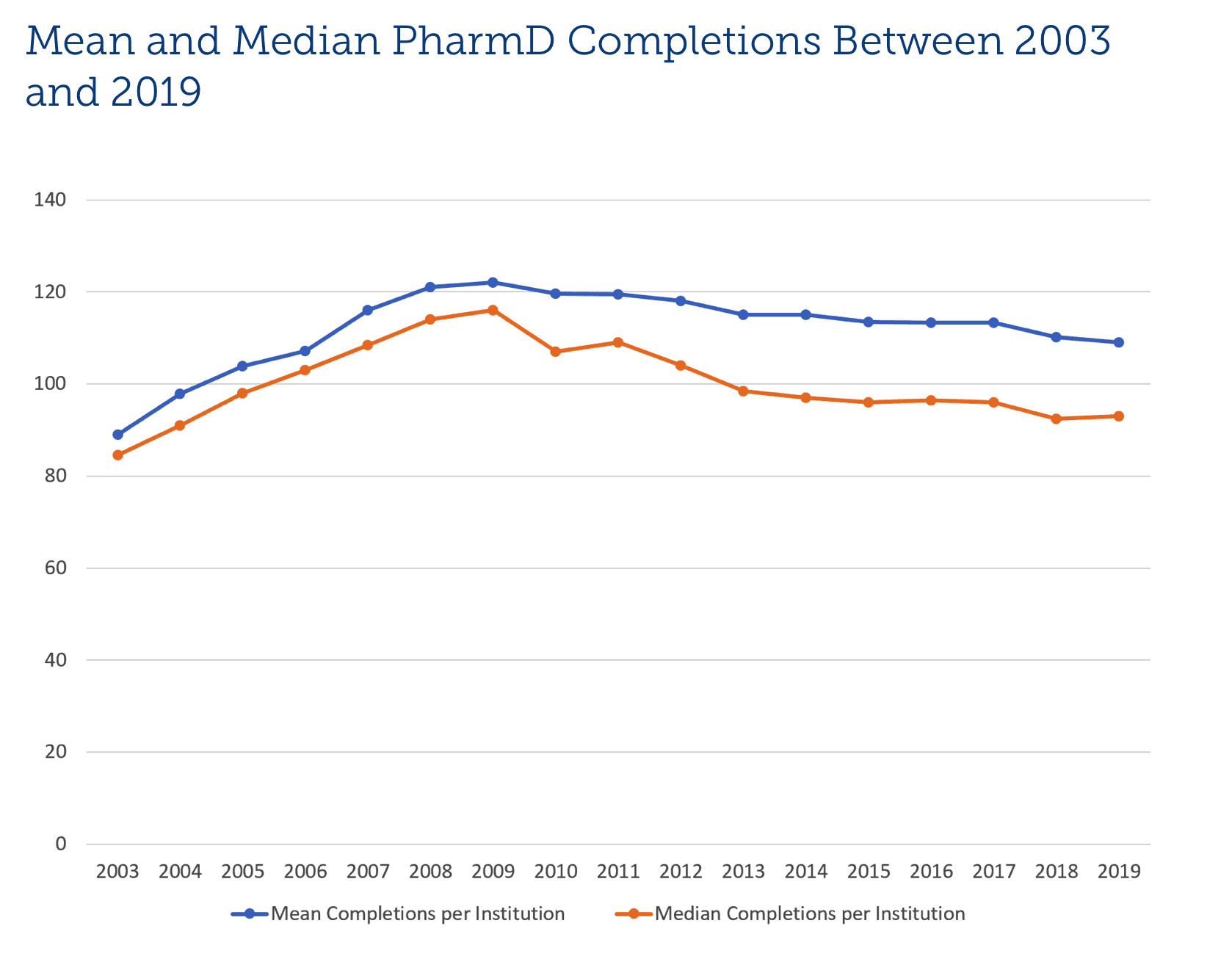3 challenges facing pharmacy schools—and how to meet them
In just three years, the employment projections for pharmacists have taken a turn from growth to decline, a dramatic reversal with potentially disastrous implications for pharmacy schools. After projecting that “aging baby boomers, higher rates of chronic diseases, and scientific advances in drug development” would drive demand for pharmacists, the Bureau of Labor Statistics (BLS) reversed their stance. Now, employment for pharmacists is projected to decline 3% between 2019 and 2029, resulting in a loss of approximately 10,500 jobs.
At the same time, the number of pharmacy programs is growing (i.e., from 91 programs in 2008 to 136 programs in 2018), resulting in increasing competition as demand for pharmacists falls.
But what is driving these changes—and what can pharmacy schools do to best weather this challenging market? Here are three challenges facing pharmacy schools today and next steps pharmacy schools can take now.
1. Decreasing demand for and reduced appeal of in-store retail pharmacist careers
As more people begin to fill their prescriptions online and via mail order, retail pharmacies and drug stores are expected to need fewer pharmacists. Pharmacy technicians are increasingly performing tasks previously performed by pharmacists, further reducing the need for pharmacists. The National Center for Health Workforce Analysis “projects an oversupply of 19,000 to 51,000 pharmacists in the US by 2030.” The rapid growth in institutions in this field has led to a saturated job market and a “joblessness crisis for new graduates.”
Chain pharmacies such as Rite Aid, Safeway, and Walgreens made up over 25 percent of the job postings requiring a Doctor of Pharmacy nationally between September 2016 and June 2021. Simultaneously, the 2019 National Pharmacist Workforce Study reported higher levels of burnout and lower levels of fulfillment for pharmacists at big national chains.
Further, as the cost of PharmD programs has increased, salaries have stagnated. The average pharmacy student debt rose by more than $40,000 in five years but pharmacists’ salaries did not keep up. The combination of burnout, stagnant pay, and increasing debt presents an unappealing, high-cost low-yield option for those considering the field.
2. Declining growth in student demand and increasing competition
Student demand for pharmacy programs has begun to level off. Student demand for PharmD programs grew steadily from 2003 through 2016, almost doubling during the period. However, between 2016 and 2019, degree completions only grew by a net of about 200 (i.e., growth of 1.38 percent). The growth in conferrals has slowly lessened, from 7 percent average growth from 2006-2010, to 5 percent from 2011-2013, to 2 percent from 2014-2018. Therefore, despite the increase in net completions, the market is experiencing weakening student demand.
See One Pharmacy School’s Tactics for Growing Enrollment
At the same time, competition is growing. The number of institutions reporting PharmD completions increased from 84 institutions in 2003 to 93 institutions in 2009 to 137 institutions in 2019.

The mean and median completions per institution peaked in 2009 and now hover at about 109 (mean) and 93 (median). This suggests a competitive market, with the growth in programs outpacing the growth in student demand in recent years.

Here’s How One Institution Increased Graduate Program Deposits by 23%, Despite Growing Competition
Although the number of degree completions has continued to grow, the number of applicants to PharmD programs has been declining every year since 2013. A survey conducted by the American Association of Colleges of Pharmacy indicated that 62% of the 134 responding institutions were unable to fill the entering class in 2019, with a mean of 15.6 unfilled seats.
“Thought leaders are urging schools to graduate an appropriate number of competent entry-level practitioners trained to fill the positions that employers have available,” according to a 2019 article in the American Journal of Pharmaceutical Education.
3. Changing needs of the remaining jobs
Despite declining retail need for pharmacists, demand for pharmacists in health care settings such as hospitals and clinics is predicted to rise. Further, there is a shift from dispensing roles to patient care-oriented roles such as ambulatory care and outpatient/clinical pharmacotherapy. Pharmacy associations continue to advocate for provider status, or a pharmacist’s ability to qualify as a medical provider and be commensurately compensated. COVID-19 has led to the expansion of pharmacist responsibilities, whether that be the ability to test for infectious diseases or the ability to administer tests like cholesterol or genomic tests.
Next steps for pharmacy schools
While no simple solution exists for PharmD programs to address workplace conditions such as burnout or low salary, schools can offer additional skills to broaden the field beyond traditional pharmacist roles. Pharmacy schools could also offer non-degree pursuers the opportunity to complete training or certificate programs to increase program revenues and potentially create a pipeline to future enrollment. Consider the addition of targeted outreach activities, guided academic pathways, and affiliation agreements to establish academic pipelines.
Pharmacy schools can also double down on smart marketing strategies to better identify students amid declines in the number of students taking the PCAT. While word-of-mouth is a key part of pharmacy recruitment, using smart marketing to reach prospective students (and get to them first) can dramatically increase the odds that they apply to your program.
The average number of PharmCAS applications per applicant was only 2.57 in 2019-20. Programs that effectively communicate the value of pharmacy and of their school can significantly increase their odds of growing enrollment, despite these market challenges.

More Blogs

4 questions domestic students will ask before applying to your graduate program

4 predictions for 2026: What’s next for graduate and online enrollment
